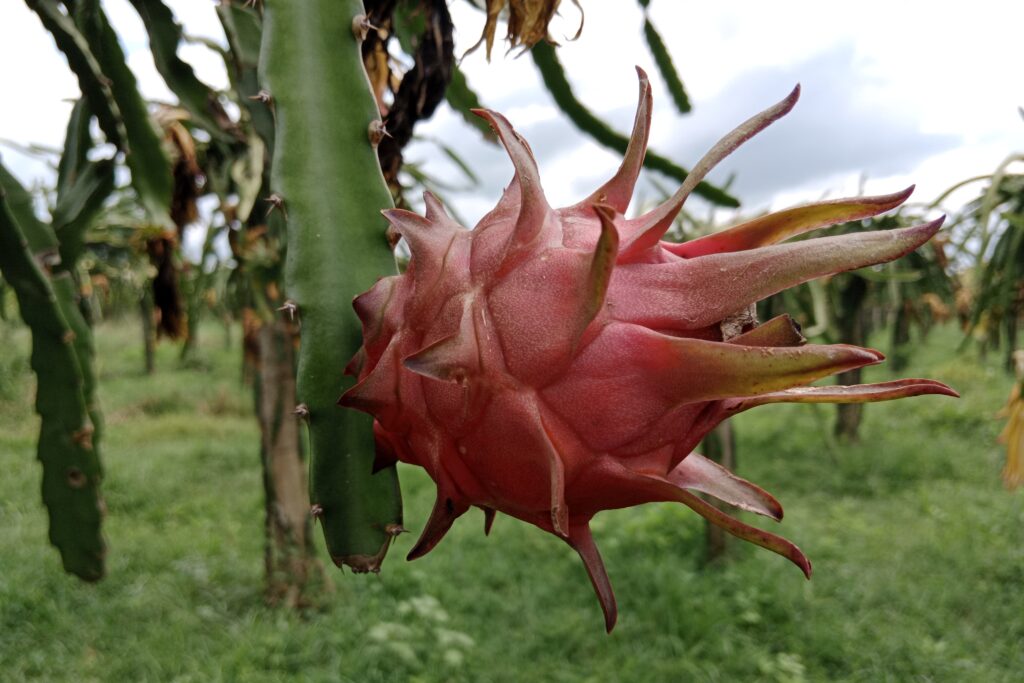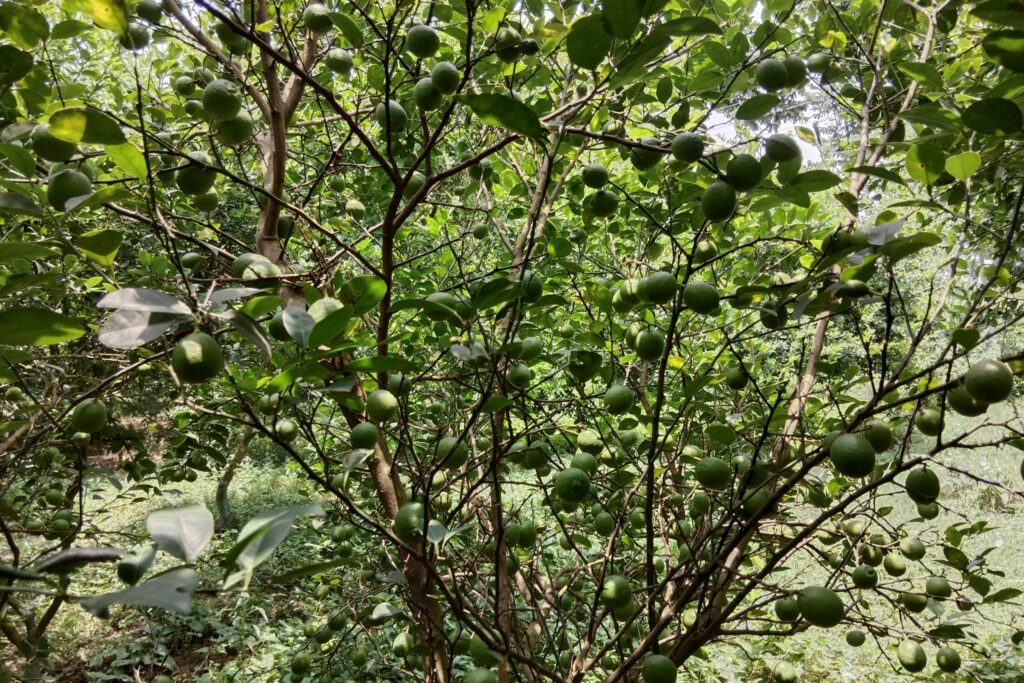Cucumber Farming
Cucumber farming profit per acre shows significant potential, with a net profit of NRs. 123,000 achievable under optimal conditions (Total Income: NRs. 160,000 – Total Cost: NRs. 37,000). This translates to a robust 76.88% profit margin, driven by high market prices (NRs. 20/kg) and efficient management of key expenses like land preparation (NRs. 10,000), fertilizers (NRs. 7,000), and irrigation (NRs. 5,000). While an estimated yield of 8,000 kg/acre underpins this profitability, returns may fluctuate due to yield variability, pest challenges, or seasonal price shifts, emphasizing the need for strategic planning to sustain cucumber farming’s economic viability.
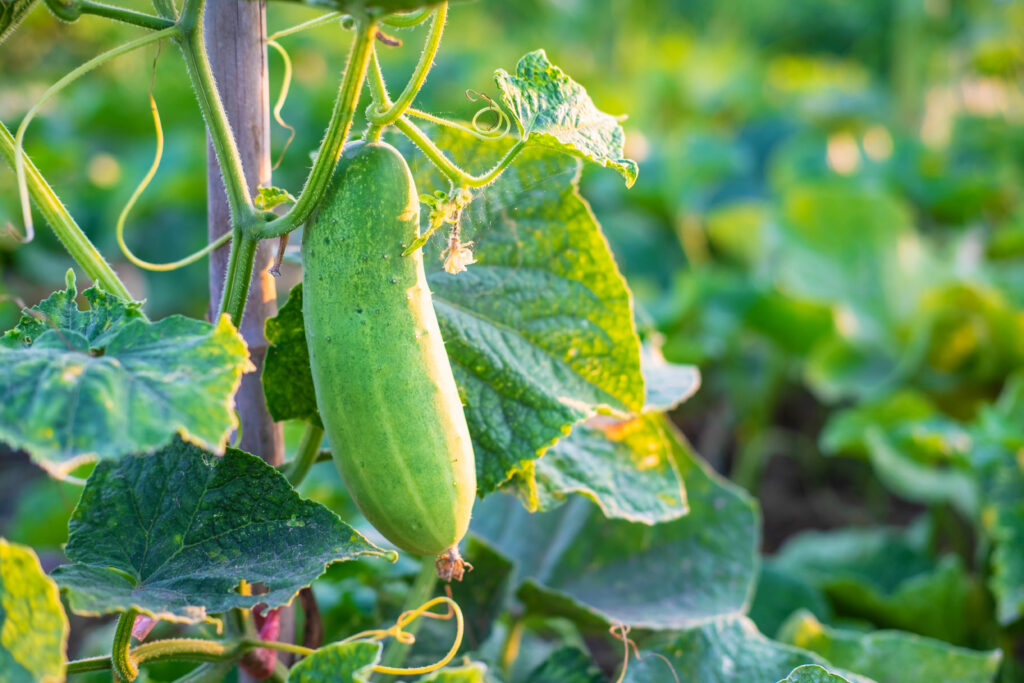
Land Preparation
Land preparation is a critical first step in agricultural practices, beginning with plowing and tilling to a depth of 20-25 cm, which aerates the soil, breaks up compacted layers, and promotes root penetration, followed by harrowing to refine the soil into a fine, crumbly tilth ideal for seedbed formation while removing weeds, rocks, and debris that could hinder crop growth.
To enrich soil fertility and structure, organic matter such as well-decomposed compost or manure is incorporated at a rate of 15-20 tons per hectare, boosting nutrient availability, microbial activity, and moisture retention.
Finally, bed formation involves shaping raised beds or ridges 15-20 cm high, particularly in regions prone to heavy rainfall, to enhance drainage, prevent waterlogging, and facilitate root development, with spacing between beds adjusted to suit crop requirements and irrigation systems. This systematic approach ensures optimal soil conditions, minimizes environmental stress, and lays the foundation for healthy plant establishment and yield maximization.
Soil Type
The ideal soil for cultivation is well-drained loamy or sandy-loam soil with good organic content, which provides optimal aeration and nutrient availability. The recommended pH range is 6.0–7.0; if the soil is too acidic, lime can be used to increase the pH, while sulfur can be applied to lower the pH in alkaline soils, ensuring a suitable environment for plant growth.
Climatic Requirements
Climatic requirements play a pivotal role in ensuring robust crop growth, with temperature being a key factor as most crops thrive optimally within a range of 18°C–30°C, though they are frost-sensitive and must be planted after the last frost to avoid cold damage. Sunlight is equally critical, requiring full sun exposure (6–8 hours daily) to fuel photosynthesis, promote vigorous vegetative growth, and maximize yield potential.
Adequate rainfall of 600–1000 mm annually is essential to sustain moisture levels, but in regions with erratic precipitation or prolonged dry spells, supplemental irrigation becomes necessary to maintain consistent soil hydration and prevent drought stress. By aligning planting schedules with these climatic parameters—avoiding frost risks, ensuring sufficient light, and managing water availability—farmers can create an environment that supports healthy development, reduces abiotic stressors, and enhances the crop’s resilience and productivity throughout its growth cycle.
Major Cultivars

a) Fresh Consumption
For fresh consumption, varieties like Marketmore and Straight Eight are excellent choices due to their exceptional quality and consistency. Marketmore is highly prized for its robust disease resistance, ensuring healthy plants and a dependable yield even in challenging growing conditions. Its fruits are dark green, smooth, and slightly ribbed, offering an appealing appearance and excellent flavor. Straight Eight, a classic variety, is renowned for its uniformly shaped fruits that grow straight and smooth, with a tender texture and mild taste. These traits make both varieties favorites among gardeners and farmers for producing fresh, market-ready cucumbers.
b). Pickling
National Pickling and Poinsett are top-performing varieties specifically bred for pickling purposes. National Pickling produces medium-sized fruits with a uniform shape, firm texture, and thin skin, making it ideal for brining and preserving. Poinsett is known for its vigorous growth and high yield, offering crisp fruits with a perfect balance of size and flavor for pickling. Both varieties are reliable choices for home gardeners and commercial producers aiming to achieve high-quality pickled products.
c). Hybrids
For certain growing requirements, hybrid cultivars like Diva and Sweet Success provide special benefits. Because Diva is a parthenocarpic variety—one that bears fruit without pollination, it is especially well-suited for greenhouse growing or regions with little pollinator activity. Sweet Success is a seedless type that is quite popular because of its mild flavor, smooth texture, and ease of use. It is also a great option for premium markets and fresh consumption.
Planting
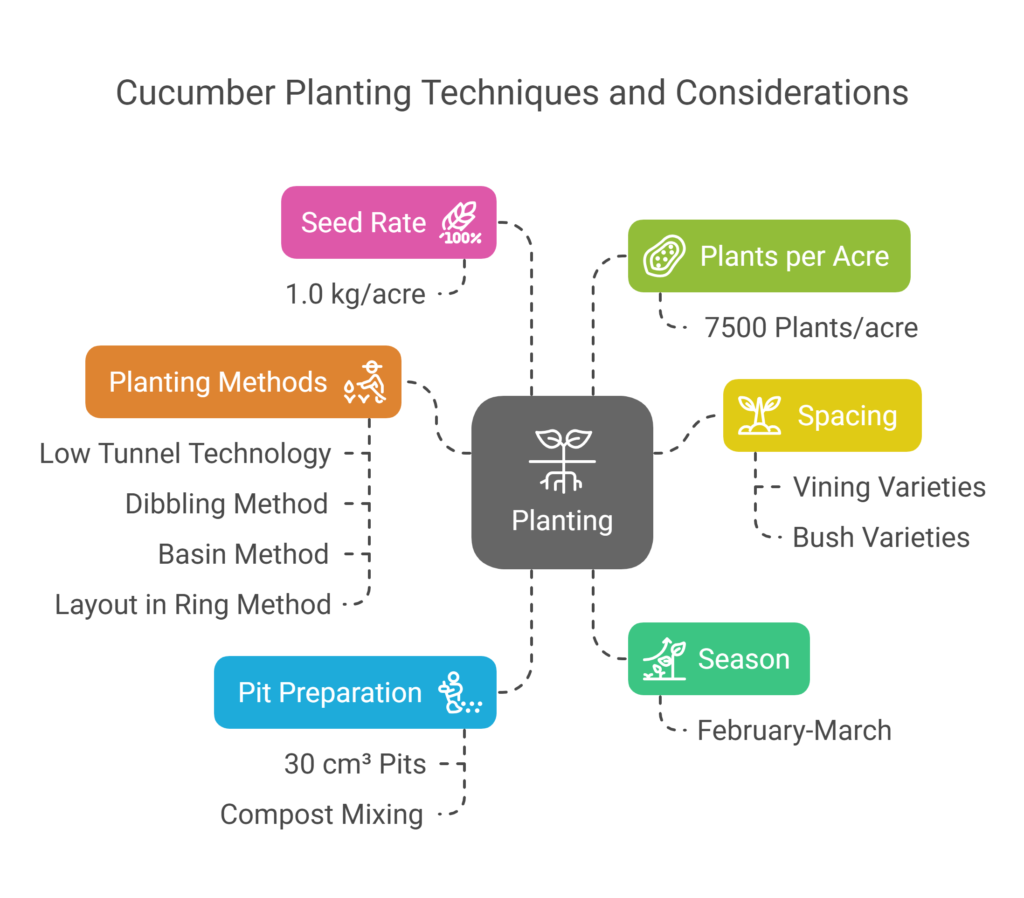
a). Season
Cucumbers are typically sown during February-March in regions with temperate climates, aligning with warmer temperatures and frost-free conditions to ensure optimal germination and early growth. This timing allows seedlings to establish robustly before the onset of monsoon rains, maximizing yield potential.
b). Seed rate
For cucumbers, use 1.0 kg of high-quality seeds per acre, ensuring ideal spacing (30–45 cm between plants, 60–90 cm between rows) to prevent overcrowding and promote healthy growth. Opt for certified seeds (>85% germination) and pre-treat (e.g., fungicide coating) to boost seedling vigor and uniform crop establishment.
c). Spacing
For the best possible growth and yield, proper spacing is essential. To allow for their extensive growth and to guarantee adequate air circulation, vining cucumber varieties should have row spacing of 1.2 to 1.8 meters. Because bush variants have a compact growth habit, a row spacing of 0.6 to 0.9 meters is adequate. Individual plants in rows should be separated by 30 to 45 centimeters to allow for proper root development and reduce competition for water and nutrients.
d). Pit Preparation
Prepare planting pits measuring 30 cm³ to ensure adequate space for root development and nutrient absorption. Enhance soil fertility and structure by mixing 2–3 kilograms of compost into the excavated soil before filling the pits. This practice promotes healthy plant growth by improving soil aeration, water retention, and nutrient availability.
e). Planting Method
Low Tunnel Technology: Low tunnel technology is employed to achieve an early yield of cucumbers during the early summer season. This method protects the crop from cold conditions prevalent in December and January. Beds with a width of 2.5 meters are prepared and sown in December. Seeds are planted on both sides of the bed, maintaining a distance of 45 cm between them.
Before sowing, supportive rods of 45–60 cm in length are fixed into the soil to hold the covering. The beds are then covered with a plastic sheet of 100-gauge thickness using the support rods. This plastic cover helps retain warmth and shield the plants from cold stress. The plastic sheet is typically removed in February when the outside temperature becomes favorable for cucumber growth.
Dibbling Method: This method involves placing seeds directly into pre-made holes at the required spacing. It ensures uniform seed placement, reduces seed wastage, and promotes better germination and growth.
Basin Method: In this approach, seeds are sown in circular or square basins filled with nutrient-rich soil. This method enhances water retention and is particularly useful in areas with limited water availability.
Layout in Ring Method: The ring method involves creating circular planting layouts with seeds evenly spaced along the ring. This technique helps in efficient space utilization and facilitates better irrigation and nutrient distribution around the plants.
f). Plants per Acre
7500 plants /acre with a row spacing of 1.8m and plants in row at 0.3 m.
Irrigation
| Category | Details |
| Critical Stages | Flowering and fruiting stages; consistent moisture is vital for healthy plant development. |
| Methods | Drip irrigation (efficient, reduces disease risk); avoid waterlogging to prevent root issues. |
| Frequency | – Dry spells: 2–3 times/week – Summer: Frequent irrigation – Rainy season: None required |
| Schedule | – Total irrigations: 10–12 – Pre-irrigation before sowing – First irrigation 2–3 days post-sowing – Subsequent irrigations every 4–5 days – Drip irrigation optimizes moisture and efficiency. |
Fertilizers and Manure
| Stage | Fertilizer/Input | Rate (per acre) | Application Method | Notes |
| Pre-Planting | Azospirillum + Phosphobacteria | 1 kg each | Mix with 50 kg FYM + 40 kg neem cake | Apply before last ploughing; enhances soil microbial activity. |
| Pseudomonas | 1.5 kg | Incorporate into soil | Biofertilizer for nutrient solubilization and disease suppression. | |
| Basal Application | Compost | 12 tons | Broadcast during land preparation | Improves soil organic matter and structure. |
| Balanced NPK (10-10-10) | 40–50 kg | Incorporate into soil | Provides foundational N-P-K for early growth. | |
| Vegetative Stage | High-Nitrogen (20-10-10) | 80 kg | Split into 2 side-dressings | Prevents nitrogen leaching; promotes leafy growth. |
| Flowering Stage | High-Phosphorus Foliar (0:52:34) | 2–3 kg | Dissolve in 200–300 L water; spray foliage | Apply early morning/evening to avoid burn; boosts flowering and roots. |
| Fruiting Stage | High-Potassium (0:0:50) | 40–60 kg | Side-dress into soil |
Weed Control
Effective weed management involves mulching with organic materials (e.g., straw) or plastic mulch to suppress weed growth, combined with manual weeding 2–3 times during the early growth stages to remove invasive plants. If herbicides are necessary, apply pre-emergent options like pendimethalin cautiously, following label instructions to avoid crop damage. This integrated approach minimizes competition for nutrients and water while safeguarding cucumber plants.
Pest and Disease Management
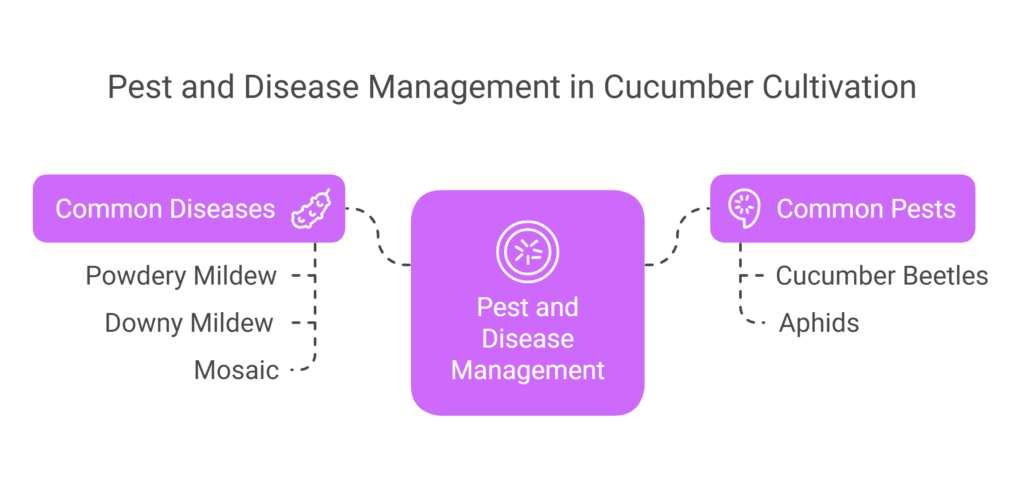
Common Pests
a). Cucumber Beetles
To manage cucumber beetles, employ lightweight row covers to physically block adult beetles from colonizing young plants, ensuring removal during flowering to allow pollination. Supplement with organic pyrethrin-based sprays applied during early morning or evening to target active beetles while minimizing harm to pollinators. Regular monitoring and crop rotation further reduce beetle populations and associated bacterial wilt transmission, ensuring healthy cucumber growth.
b). Aphids
To control aphids, apply neem oil or insecticidal soap, which act as effective organic treatments by disrupting their life cycle and suffocating the pests. Spray thoroughly on the undersides of leaves, where aphids congregate, repeating applications weekly or biweekly as needed. These methods are safe for beneficial insects and plants when used as directed, and combining them with practices like introducing natural predators (e.g., ladybugs) or hosing plants with water can enhance management and prevent infestations. Early detection and consistent treatment are key to minimizing damage and ensuring healthy cucumber growth.
Common Diseases
a). Powdery Mildew
One sign that makes the leaves wither is white, powdery areas on the upper leaf surfaces. Use carbendazim at a dosage of 2 grams per liter of water or fungicidal sprays such as Dinocap, Benomyl, or Chlorothalonil to effectively control the disease. Early applications are crucial to prevent spreading.
b). Downy Mildew
Cucumbers are susceptible to downy mildew, a fungal disease that causes grayish mold on the underside of the leaves and yellowish patches on the upper surface, which eventually reduces photosynthesis and yield. It is recommended to grow resistant cucumber cultivars that are less prone to infection in order to control this illness.
Furthermore, copper-based fungicides can be used to stop the disease’s spread both preventively and therapeutically. The danger of downy mildew outbreaks can be further decreased by practicing proper field management, which includes crop rotation, adequate air circulation, and avoiding overhead irrigation. Timely action is ensured by routinely checking plants for early indications of illness.
c). Mosaic
Symptoms include stunted plant growth, downward-curling leaves, and light-yellow discoloration of fruit knobs. Treatment involves applying Diazinon or Imidacloprid 17.8% SL @ 7ml per 10 liters of water to manage the disease. Control aphid vectors and remove infected plants early to limit spread.
Harvesting
When the fruits are firm, green, and 15–20 cm long, 50–70 days after planting, cucumbers are usually ready for harvest. Because regular harvesting promotes continued fruit production, harvest every two to three days with sharp knives or shears to prevent bruising. Fruits should be promptly cooled to 10°C to 12°C after harvest and stored at 85–90% humidity to preserve freshness and increase shelf life for up to 10–14 days. The best quality and marketability are guaranteed by appropriate handling and storage.
Cost of Investment per Acre Cucumber Farming
| S.N. | Categories | Cost (NRs.) |
| 1 | Land Preparation (plowing, leveling) | 10,000 |
| 2 | Seed Rate | 1,000 |
| 3 | Labor (sowing) | 2,000 |
| 4 | Fertilizers & Manure | 7,000 |
| 5 | Irrigation | 5,000 |
| 6 | Weed Control (pre/post-emergence) | 2,000 |
| 7 | Pest & Disease Control | 2,000 |
| 8 | Harvesting | 5,000 |
| 9 | Miscellaneous Costs | 3,000 |
| Total Cost | 37,000 |
Income from One Acre Cucumber Farming
| Particulars | Estimated Yield | Market Price (NRs/kg) | Total Income (NRs.) |
| Cucumber Yield | 8,000 kg | 20 | 160,000 |
Analysis of Cucumber Farming Profit Per Acre
Cucumber farming yields a net profit of NRs. 123,000 per acre (Total Income: NRs. 160,000 – Total Cost: NRs. 37,000), reflecting a strong profit margin of 76.88%, driven by high market prices (NRs. 20/kg) and efficient cost management. This profitability hinges on achieving an estimated yield of 8,000 kg/acre, with major expenses allocated to land preparation (NRs. 10,000), fertilizers (NRs. 7,000), and irrigation (NRs. 5,000). The high margin underscores cucumber farming’s viability under optimal conditions, though actual returns may vary with yield fluctuations, pest pressures, or market price changes.

